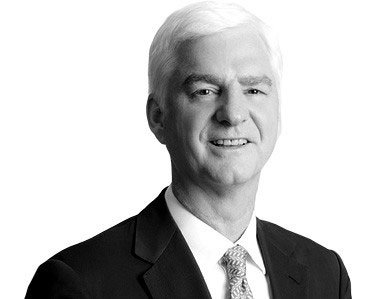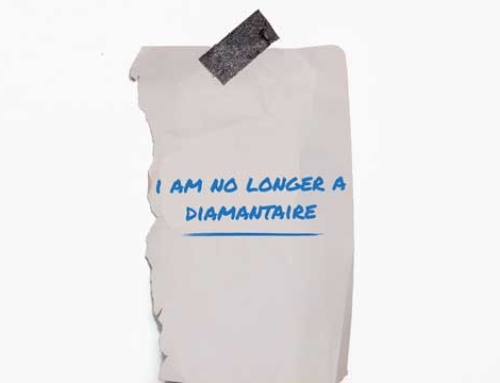image Stephen Lussier – De Beers Group
Stephen Lussier, senior manager of De Beers, who is now chairman of the new consumer products division (consisting of Forevermark, De Beers Diamond Jewellers and the synthetic range Lightbox) and the Diamond Producers Association (DPA), met JCK after the Forevermarket breakfast at JCK Las Vegas on 30 May. In this interview he discusses how the bridal jewellery market is developing and what the real purpose of Lightbox is, as well as its future.
During breakfast on May 31 you presented a new range of bridal jewellery from Forevermark, which Forevermark will make itself, announcing a major shift. Why did you decide to go down this path?
Stephen Lussier: This shows that the bridal market is changing and that the wedding consumer is also evolving. For us, consumers need to think differently about the meaning of a diamond. In the past it was considered to buy a diamond at the beginning of a relationship in order to establish a commitment Nowadays this is usually not the case anymore. There are many other steps in the right direction, which in practice already prove a commitment: buying a pet, living together, buying a house. That’s why diamonds may seem less important. What our studies show is that when people have been married for five years, diamonds become more important, but it takes time. Initially, diamonds were not part of their projects. We must therefore push them so that they feel that this is important to them. The message is very different.
How does this translate into advertising?
Stephen Lussier: The campaign wants to make it clear that a diamond will play a role throughout their lives. If you look at old diamond advertisements, they all focus on the extraordinary moment when a man asks a woman to marry him. In reality, for most people this moment is no longer what it used to be. We need to make them understand the role diamonds will play in their lives. In the new ad we show not only newly engaged couples, but also people who have been married for 50 years, and how diamonds remain important in their lives. In this process, people’s way of thinking will change, putting diamonds back on their spending priorities.
Consumers, especially those of generation Y, are facing financial constraints. Some even have children. To emphasize this priority, you have to remind them of diamonds as a source of joy that lasts a lifetime.
How do the sales of Lightbox evolve? Are your projects still the same?
Stephen Lussier: We are satisfied with the evolution. We mainly sell blue and pink, in terms of design. We are limited in our production capacity and will remain so until our new factory in Oregon is operational, which is expected to happen next year. Once this is the case, we will be able to surpass the capabilities of our e-commerce platform, which is likely to attract a lot of interest from jewelers. But we want to have the resources to meet this demand.
Doesn’t that cannibalize the bottom end of the market?
Stephen Lussier: Not to a large extent. We sell a category for which the competition is mainly that of jewellery without diamonds. If you look at the market for jewellery below $500, the share of diamonds is less than 5%. If you exceed $1000, you get a higher share for diamond jewellery. To the extent that we can make synthetic diamonds under $500 competitive, we are in a different market segment, from a diamond perspective. Cannibalisation is therefore minimal.
It is more likely to affect some of the semi-precious stones at the bottom of the range. But on this side of the market, the most important thing is still colour.
Is Lightbox’s goal to lower the price of synthetic diamonds?
Stephen Lussier: No, I would say that the strategic goal is to position the category in a sustainable way, with added value, different from the value proposition of a natural diamond. That does not make it a bad proposal, but it is a different one.
As a result, prices had to be reduced. And that is what they did. It is the law of the market. As Chinese synthetic production increases and you have a technological curve that lowers prices, prices fall every time you double production. They have already started to fall quite sharply, as we saw at the Hong Kong show.
It should be a “cost plus” activity, not a scarcity-based activity. Price cuts are not an end in themselves, but are necessary if you want to be honest and fair to the consumer.
A recent Gizmodo article on synthetic diamonds states that 45% of Lightbox production will come from renewable sources. Does this mean that Lightbox is a ‘green’ product?
Stephen Lussier: Not really. We are connected to the public power grid. This means that Lightbox will be located at the bottom of the emission range. And to be honest, whether you look at a natural diamond or a synthetic diamond, they don’t make a major contribution to greenhouse gas emissions. The energy used to produce an average natural diamond, which is needed to produce one carat of polished form, is equal to what it takes to make three iPhones. Through buying iPhones, I know they last about nine years for me. The diamond I will have will last 50 years. It’s a weird subject to talk about. You stress things that are not particularly important in the world.
Lightbox will use hydroelectric power, which is cheap. It is quite difficult to use renewable energy for the production of synthetics. To synthesize a diamond, you need a perfectly homogeneous energy, over a long period of time. The series lasts two, three weeks. If there are energy fluctuations in this period, you lose the series. The problem with renewable energy sources is that they are not constant. You use the wind, but when the wind stops, there is no energy left. So you need huge batteries. I don’t think a synthetic producer would use renewable energy. It is likely that natural diamond mining will be the first to do this. In De Beers we want the next mine, hopefully in Canada, to be carbon-neutral.
Trucost

“Clarity of vision is the key to achieving your objectives.”
Sylvain Goldberg






